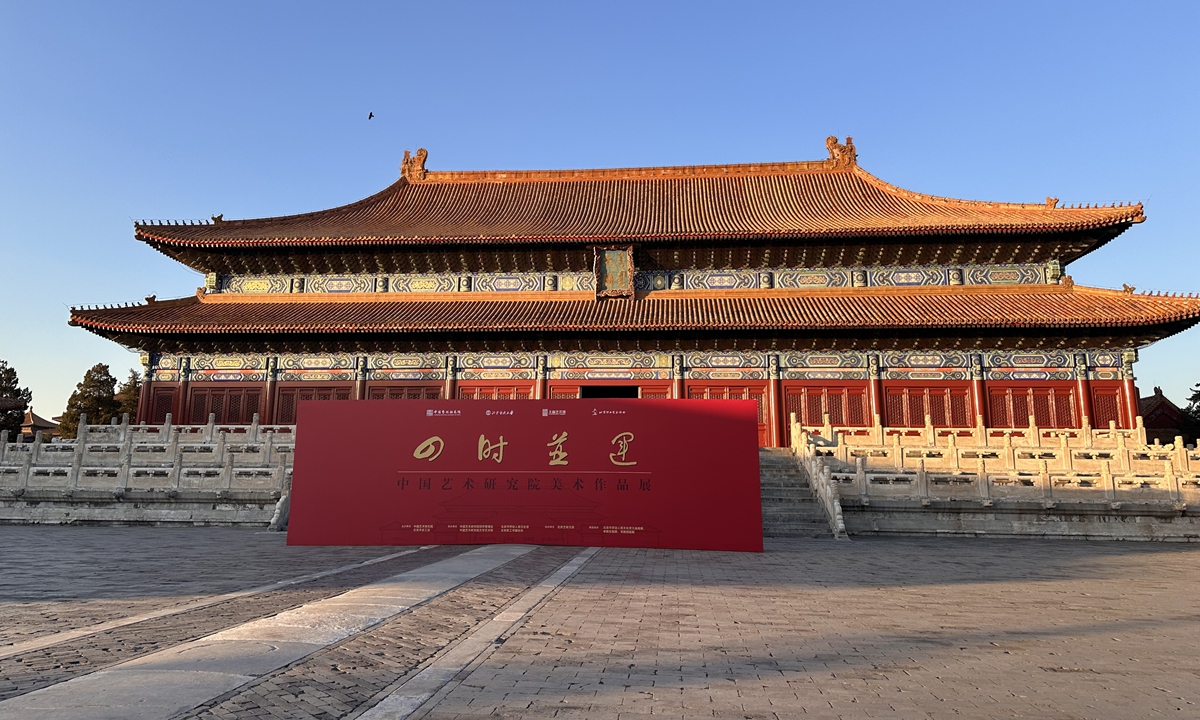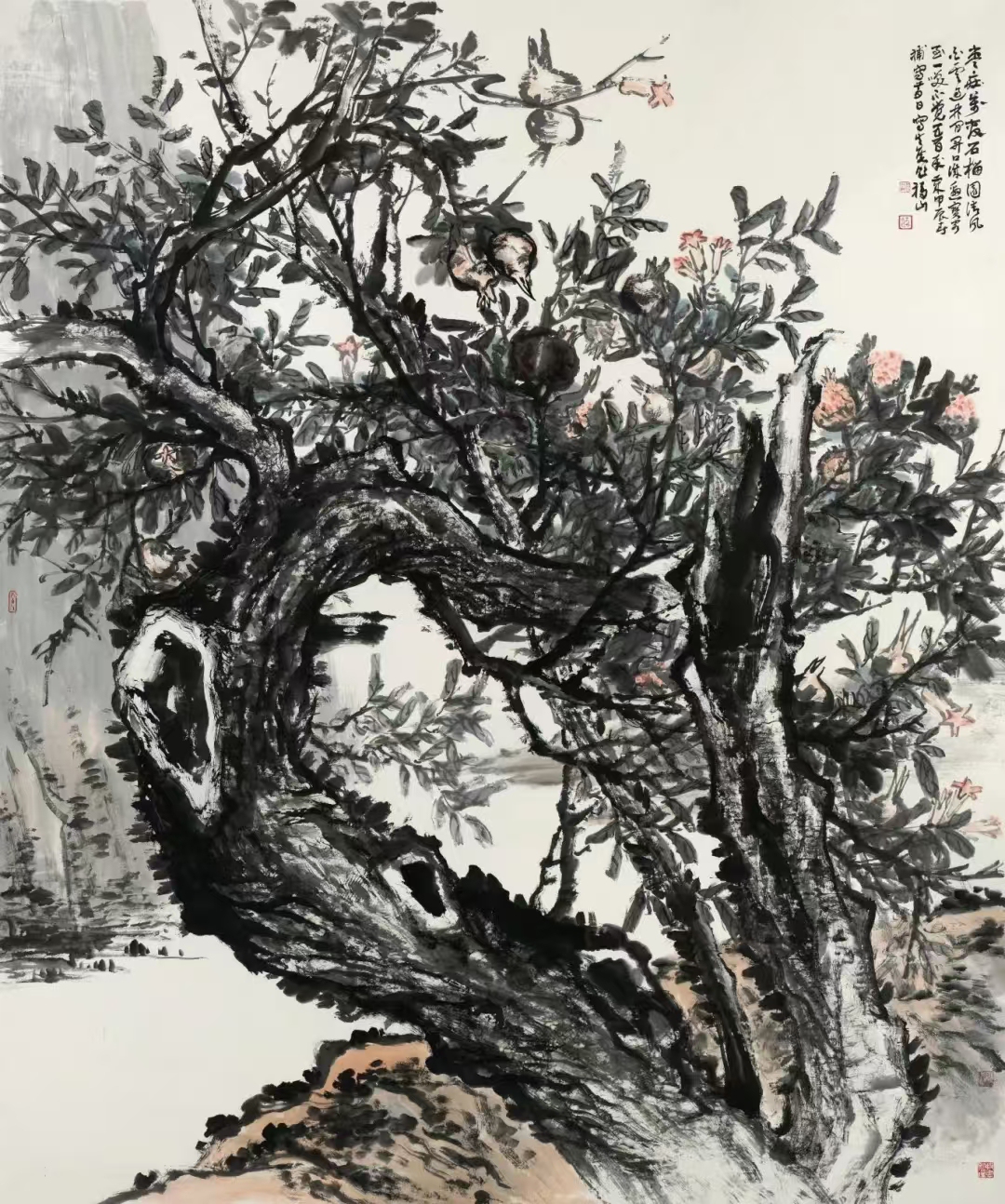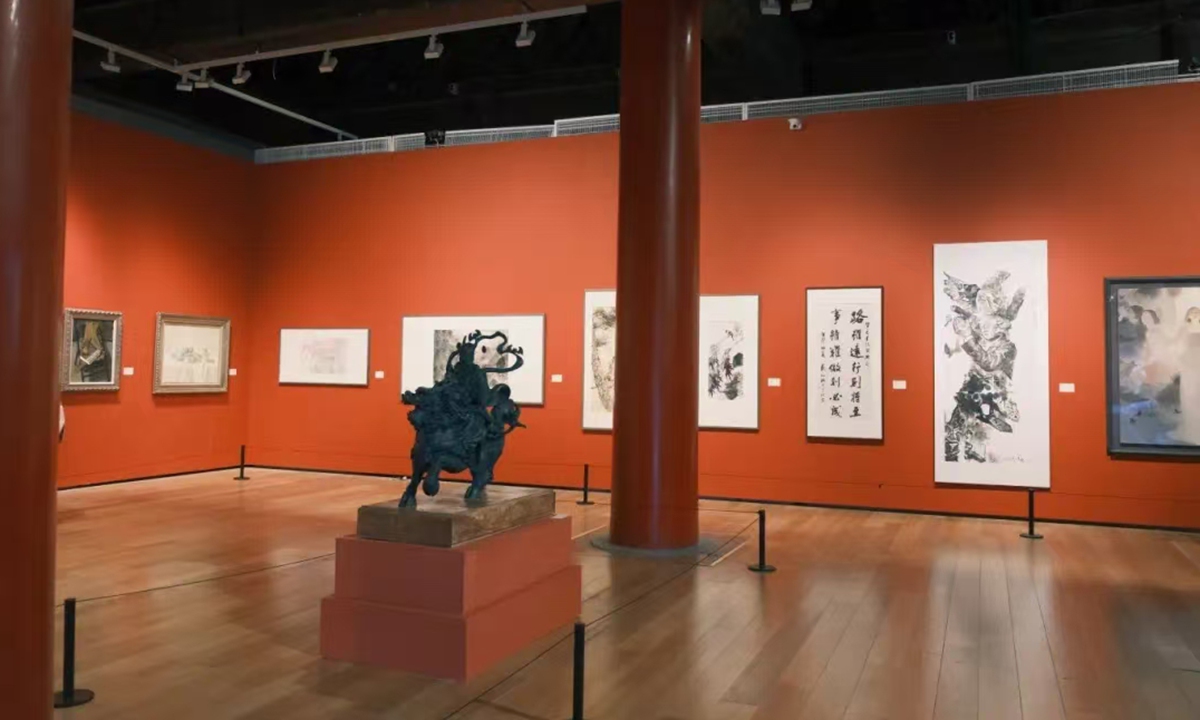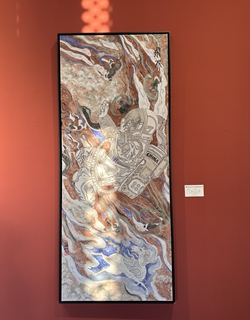
The exhibition hall at the Imperial Ancestral Temple Photo: Ji Yuqiao/GT

The painting by Xu Fushan Photo: Courtesy of Chinese National Academy of Arts
A new art exhibition featuring hundreds of masterpieces focusing on the essence of traditional Chinese culture and the colorful lives of Chinese people has been launched at the Imperial Ancestral Temple in Beijing.
The opening ceremony of the exhibition, hosted by the Chinese National Academy of Arts, was held on Friday, bringing together a group of renowned contemporary Chinese artists from various fields such as calligraphy, painting, and sculpture to discuss issues related to better interpreting the times through artworks.
A painting by Xu Fushan, deputy head of the Chinese National Academy of Arts, was presented at the event, depicting a 500-year-old pomegranate tree that was planted in the Ming Dynasty (1368-1644).

Inside the exhibition hall Photo: Courtesy of Chinese National Academy of Arts
The pomegranates on the painting represent the prosperous contemporary lives of Chinese people and unity among all Chinese ethnic groups, Xu told the Global Times on Friday. Visitors at the exhibition said they could feel the vigorous vitality of the painting as soon as they saw it.
Another painting named
Flying Apsaras combines the traditional mural style in the Mogao Grottoes in Dunhuang, Northwest China's Gansu Province, with the image of a Chinese astronaut. The painting depicts the astronaut flying in a wonderland in the ancient murals, demonstrating harmony between tradition and modernity.

The painting named Flying Apsaras Photo: Ji Yuqiao/GT
Zhou Qingfu, head of the academy, stated at the opening ceremony that it is hoped that through this exhibition, artists will be able to form new understandings, establish new exchanges, and discover new issues.
Speaking of the reasons why he chose to launch the exhibition at the Imperial Ancestral Temple, Xu told the Global Times that these works can serve as a complement to the ancient architectural complex, giving audiences a better understand of the vitality of Chinese culture.







